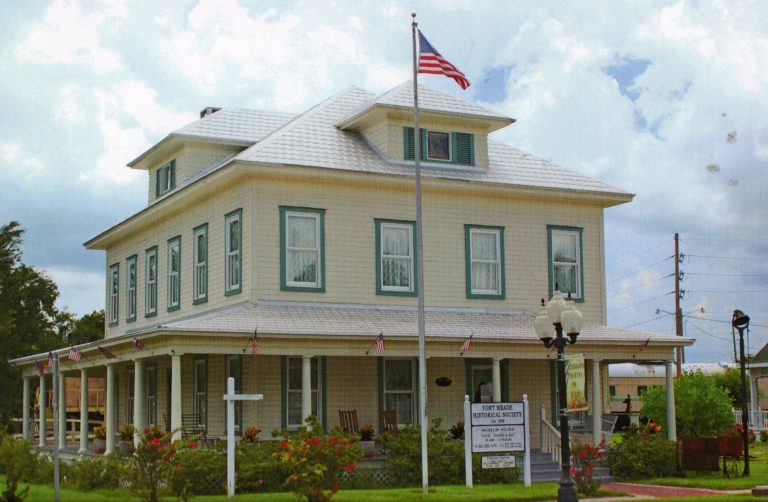
Fort Meade is the oldest city in Polk County. Settled in 1849 during the Second Seminole War, Fort Meade is named after Lt. George Meade who crossed Peace River in close proximity to the present bridge on US 98 E. However, the first moniker for the fort was Fort Clinch.
During the Civil War, Fort Meade was an important area for Confederate cattle-driving. In 1864, several Union raids from their post at Fort Myers, Florida were directed at Fort Meade, Florida. One raid led to a skirmish at Bowlegs Creek south of Fort Meade in April 1864. One Confederate soldier was killed, and another was wounded. While the Union troops suffered no casualties, they did not continue their advance on Fort Meade. In May 1864, a larger Union force of over 200 men burned and destroyed Fort Meade. The Union captured seven Confederate prisoners and confiscated more than 1,000 cattle. Nearly 100 Unionist refugees also returned with them to Fort Myers, Florida.
Located in the restored c.1885 Old Fort Meade School House, Fort Meade Museum features an extensive collection of area artifacts. Fort Meade Museum offers a showcase of local history going back to the year 1849. The museum has a wrap-around porch with porch swings and rocking chairs. Outside sits Museum park with a hand-crafted gazebo where there are live performances and entertainment staged throughout the year. Also, on the grounds is a phosphate train dedicated to Buford Brown and a farm shed dedicated to Olma Hendrick. The train is available upon request for meetings and the farm shed is the location of the Fort Meade Historical Society’s annual BBQ during the County Fair.
Upon entering the museum, there are photos, artwork, and decor related to Fort Meade’s economic staples: citrus, phosphate, and cattle. Downstairs, the walls are lined with memorabilia of “Golden School Days”, the influence of those who helped build Fort Meade, the support and dedication of country doctors and first responders, and the historical significance of Native Americans.
Upstairs is an area of the museum that immerses you in the life and styles of a typically Florida turn-of-the-century home. There is a model nursery, kitchen, and bedroom, as well as a patriotic display honoring service men and women. Additionally, there is a memorial to Fort Meade resident James Henry Mills, who won the Congressional Medal of Honor for his bravery in World War II. The cross-county expressway is named in Mills’ honor.
In addition to touring the museum, visitors also have the option to do a Self-Guided Driving tour through the city using a printed or digital guide provided by the museum. When walking through the museum, there are volunteers to answer questions and share insights on some of the items on display. Admission is free, and donations are greatly appreciated.
